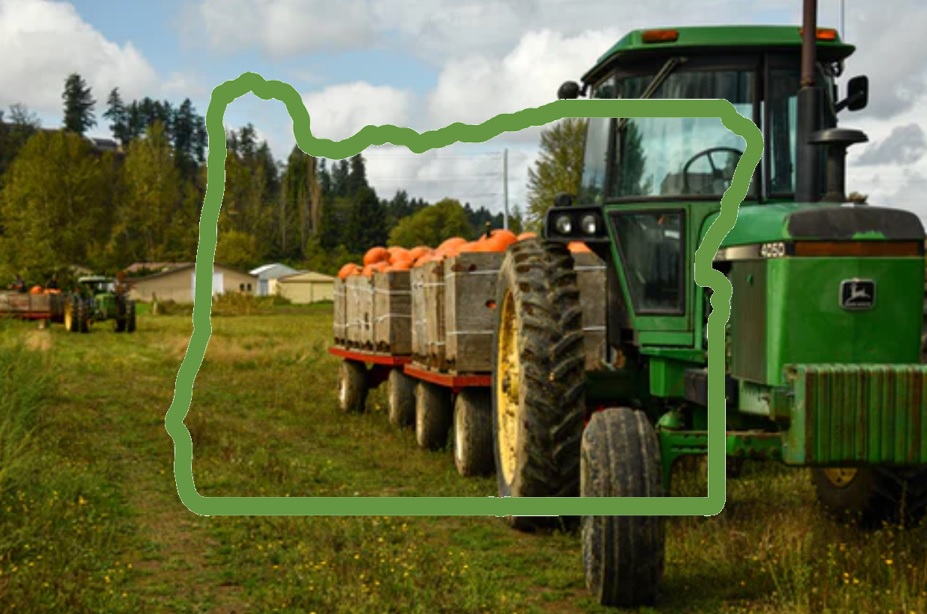
Oregon Farm Bureau and Cattlemen’s Association Issue Response to Governor’s Veto Threat
By Austin McClister
Oregon Farm Bureau Federation,
The following is a letter sent to Governor Kotek on August 5, 2025 from OFB President Angela Bailey and OCA President Matt McElligott regarding the potential veto of Senate Bill 976.
Dear Governor Kotek:
We are writing to express our combined support for SB 976, which would allow properly trained individuals to verify whether cattle are pregnant. We understand that you have questions and possibly some concerns about the bill and we appreciate the opportunity to provide additional context and information for your decision-making. Put simply, we believe the bill represents good policy that is the product of a strong policy development process which is reflected by overwhelming votes of support in both the Senate (28-1) and House (47-2). SB 976 illustrates what is possible when partisan politics are put aside in favor of policy advancements intended to support real needs in the community, and we are proud to be a part of moving the bill to this point and respectfully request your support to push it across the finish line.
The cattle industry is one of the few bright spots in the current agricultural economy, which has been under an enormous amount of stress as is evidenced by the loss of more than 2,000 farms in Oregon alone from 2017 – 2022, based on data from the most recent Ag Census, conducted by the U.S. Department of Agriculture. 1 That rate of loss translates to more than one farm per day. Particularly in these agricultural economic headwinds, the cattle industry is a key economic driver in Oregon, and especially rural Oregon. In a Western Livestock Journal article from February 15, 2025, Oregon State University’s Extension Service notes: “The cattle industry is a significant part of Oregon’s economy, contributing over $900 million annually. It consistently ranks first or second among the state’s most-valued agricultural commodities, providing numerous employment opportunities and supporting economic stability throughout the Pacific Northwest.”
The OSU Extension Service goes on to explain that “Most of the state’s estimated 11,000 cattle ranches are in southern and eastern Oregon, particularly in Malheur, Morrow, Harney, Klamath and Lake counties.” According to U.S. Census data, these five counties collectively represent 3% of Oregon’s total population, or 130,709 residents.3 At the same time, the total land area of the five counties amounts to 36,132 square miles, or about 38% of Oregon’s 95,997 square miles. At an average of 3.6 people per square mile, to say the area is sparsely populated is not a misrepresentation. By contrast, Multnomah County boasts approximately 1,712 residents per square mile, which is a residential concentration more than 47,000% higher than the five counties identified by OSU. Unlike other industry sectors that may benefit from geographical concentration, cattle ranching is more disparate in nature, introducing unique production challenges not experienced in other industries, namely the accessibility of animal health services. We believe this is an essential distinction that underpins the demonstrated support in the Oregon Legislature. By allowing trained individuals such as breeders or herdsman who are already on the ranch to conduct critical yet routine animal health practices in a limited fashion in areas that are difficult to reach, you can encourage economic growth in an industry that is a backbone for rural Oregon.
At the present time, the cattle market across the U.S. is tight and herds have been contracting. In fact, according to USDA data, the cattle supply is down 1% from July 1, 2023.4 Nationally, the industry is poised to grow to meet continued strong global demand. By adopting science-based animal health flexibility, the Oregon cattle industry would be more competitively positioned to take advantage of future market opportunities, while preserving animal health in underserved areas. As is evidenced by the public testimony in support of SB 976, livestock producers currently struggle to obtain the requisite large animal health support they need in a timely manner in our rural areas. With a herd of about 1.23 million animals,5 SB 976 is a straightforward and targeted opportunity to provide additional, responsible management tools to our livestock industry operators as they approach a period of herd expansion.
Beyond agricultural economics, SB 976 requires important safeguards, especially for disease reporting, that are critical to maintaining the overall health and wellness of Oregon’s cattle herd. Professionally trained individuals will be certified by the Oregon Department of Agriculture to conduct not only routine pregnancy checking activities but also evaluating the herd for health and reporting anomalies to proper animal health authorities as necessary. SB 976 would encourage increased observation by properly trained and informed technicians, resulting in a stronger animal health system within Oregon. Additionally, by increasing the number of trained and certified technicians within the cattle industry for routine activities encapsulated in cattle reproduction, SB 976 would empower our existing large animal veterinarians across the state to focus on more immediate pressures on animal health and lifting the overall level of animal care across the state.
Finally, it is important to note that from an administrative standpoint, SB 976 carries no revenue impact and has a minimal fiscal impact. We believe this is a smart, balanced, practical solution to a real-world problem that deserves your support and respectfully request it. We appreciate the opportunity to speak out in support of our rural residents and natural resource-based industries. Please do not hesitate to contact either of us if you have any questions.
Disclaimer: Articles featured on Oregon Report are the creation, responsibility and opinion of the authoring individual or organization which is featured at the top of every article.

